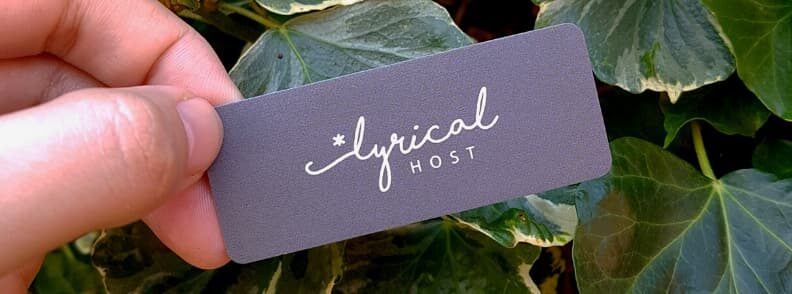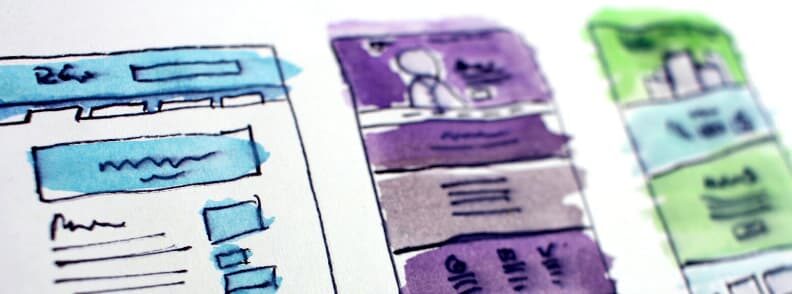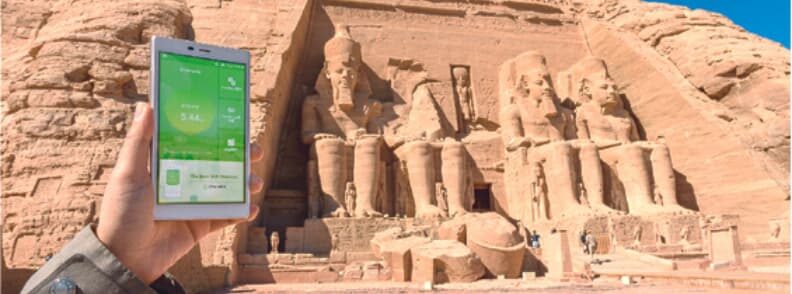There are many reasons why one would want to become a travel blogger. There are many who are dreaming about this after admiring the beautifully curated Instagram feeds showcasing an almost surreal lifestyle. Others just want to share their own experiences in the hope of helping other travelers save time with planning their trips or avoiding the same mistakes they did. And, while they’re at it, maybe earn some money to put aside for their next vacations. And last, but not least, there are those who see it solely as a business opportunity.
If you’re thinking about it, I strongly advise you to jump in and become a travel blogger out of passion only. There’s a lot of work before, during, and after the trips themselves. You have to document everything a lot more than you would do when you’d keep souvenirs just for yourself.
Disclosure: Some of the links below are affiliate links. This means that at no extra cost to you, The Travel Bunny will earn a small commission if you click through and make a purchase. Thank you!

1. Choose your travel niche and goals as a blogger
Once you know for sure that you want to become a travel blogger, the first step is to decide who you want your audience to be. Here are some questions to help you define that better:
- Will your content be about local, national or international travel?
- Do you want to write in your mother tongue or some other language?
- Are you going to address single and/or solo travelers, couples, families with children, LGBTQI, BIPOC?
- Do you plan to cover budget or luxury travel?
- What values do you promote as a traveler and wish to encourage in your audience? (e.g. adventure travel, sustainable travel, slow travel, etc.)
The first impulse is to create a catch-all travel blog. However, it’s better to start with a smaller niche to focus on in the beginning. And, once you gain an audience, you can branch out. Just don’t make it too small, though.
The same goes for the language. While English may give you a wider reach because most people study it in school or independently, the market is already saturated not just with travel blogs in English, but also with huge travel platforms in the same language. You may gain more traction by blogging in your native language if it’s not English.
Also, if choosing a language that isn’t your own, you need to consider your proficiency in that said language. Your travel information may be unique and extremely valuable. But if your know-how is full of spelling and grammar mistakes, there will be fewer people willing to go through it.
I began blogging in English because for me it felt right. I’ve been studying it since kindergarten, continued with intensive lessons in primary and secondary school, and went to a bilingual English high school, followed by a college with all lectures, seminaries, and exams in English. And then I had jobs where I used English more than my mother tongue.
However, once I met my now-husband, and began using English all the time at home, I began missing my language, which is Romanian. So to practice it constantly, I started to translate all my content into Romanian, too. And surprise, surprise, my traffic rocketed once I did that.
As my husband is French, we live in France and I’m trying to improve my French, my content’s now also available in French. Not that much traffic on that side of my blog, but I’m not proficient in this language yet. Lesson learned, hopefully, just like me, the French version of my blog will improve, too.
So, just like me, you can begin in one language, then expand. But it’s a tremendous amount of work. Beyond translating everything manually, you have to look for new keywords related to your content that make sense in the other language. Then, there’s the technical side of implementing translations, but that’s another story and also a battle you probably don’t want to take on as soon as you become a travel blogger.

2. Choose a reliable webhost
Your blog will need a place of its own on the world wide web, and that’s offered by a web host. After starting with GoDaddy, and moving to Hostgator, I’m now migrating over to Lyrical Host.
What I’ve learned over the years blogging (no just in the travel industry) is that some web hosting companies have false advertisements and do nothing about it when you call them out.
Everyone seems to offer speed and award-winning customer service. From the experience I had with my first two hosts, that can’t be further from the truth. And once you spend hours, even days chatting with people who don’t care enough to read everything you write then ask you for the thing you mentioned on the line just above, enough’s enough.
But I can’t say I hadn’t been warned when I began the process to become a travel blogger. Because I saw lots of chats in blogging groups on Facebook about web hosts. I just thought the bad reviews I read there about GoDaddy and Hostgator were isolated. How can they have award-winning customer support if this was the norm? Over the years, I realized that the Golden Raspberry Awards are also awarded, even if they celebrate the worst in the film industry. Maybe it’s the same thing here.
This summer, though, I took the leap and began migrating manually to Lyrical Host. (NB. Migration is included, but I’m making changes in the structure of my database, which is why I’m going manually.) I’ve only read great things about them and all the chats I’ve had with their customer support so far were incredibly easy to communicate and get fixed. And, in the end, the “cheap” plan I had on Hostgator was more expensive than the Tiny plan I bought with Lyrical Host.
And while some companies have you tied to them for years once they catch you, Lyrical Host is subscription-based. While you can pay well in advance, you can also pay month by month. Because the service is as promised, and the clients are happy.
What you should take away from my story, when it comes to choosing your web host, look for what you can afford. Then learn from the experiences other bloggers have had with those hosts you’re considering. (For example, besides GoDaddy and Hostgator, I also read bad reviews on Bluehost and Siteground.) Also, think long-term. Will the plan you chose help you grow or will it keep you stuck?
Even if your content is stellar, you have to spend some to earn some. It’s better to spend a bit more on your hosting to gain the speed and uptime that will make Google your friend. That way, you get more traffic. And with more traffic come more business opportunities in your mailbox and more readers converting into clients.
If you sign up with Lyrical Host to become a travel blogger, use the coupon code thetravelbunny to get 10% off your hosting plan payment.

3. Find the best name
Once you know your audience and got hosting, you should choose your domain name. In other words, your address on the World Wide Web. Some hosts offer sign-up deals to buy your domain through them. But it’s perfectly ok to have your domain with one company and your web hosting with another.
Next, you’ll want to find something catchy, representative, and short, preferably with a keyword that’s related to your content. Then, check if it’s available. And, even if it is, search the internet for similar other sites. And also on all the social media channels.
If everything looks good, register the domain and then create the related social media pages, too. Even if you aren’t active on them as soon as you become a travel blogger, that way you keep your name safe and nobody else gets to use it.
I didn’t do my due diligence when I started my blog. But, at the same time, I am not approaching the same target audience as the other Travel Bunnies. And any other name wouldn’t have had the same meaning to me, and therefore would have failed to bond me to my work the same way.
In the beginning, it was a bit tough to rank on Google, but now I’m doing fine. If I had chosen more with my mind than my heart from the start, it might have been easier to get to this point. (But I do wonder if I would have kept the same motivation.)

3. Select a CMS (Content Management System)
There are many blogging platforms out there. Some of the popular ones are WordPress, Blogger, Wix, Squarespace, and Tumblr. After trying them all over the years, I chose WordPress when I became serious about becoming a travel blogger.
It’s the one platform that offers a lot of flexibility, a good structure for SEO, endless designs (especially since they introduced the block editor), and proper support. If you’re a bit technical already or start learning about the code behind in time, you will realize just how much freedom you have in blogging with WordPress.
Furthermore, they have a strong and helpful community that everyone can join. You can do it online, on the support forums, by contributing as a developer, or in virtual meet-ups. Or you can do it in person, by going to weekly meet-ups in your area or attending WordCamps. I’ve only had the opportunity to go to one WordCamp, in 2018, but there are lots of them from all over the world on YouTube. Their speakers are from various domains, so the topics will vary from inspiration sources to fixing coding errors, and from GDPR implementation to marketing your blog on YouTube.
Plus, WordPress is free to use. (Do not confuse WordPress.org with WordPress.com, though. We are talking about the first one here.)
All of these aspects make WordPress the right choice for me. But that doesn’t mean it’s the best platform to help you become a travel blogger, too. Check out others, try them out for free, then choose what you’re most comfortable with. But think long-term and read about the problems other bloggers have encountered over the years on said platforms.

4. Get the right look
For travel blog success, there are two important factors to consider before anything else:
- It needs to be super-fast.
- It has to be mobile-friendly because Google has mobile-first indexing.
Less is more. The lighter the theme, the fewer things to distract your readers away from your travel content. And it will also load faster, which means a lower bounce rate.
Choosing a theme doesn’t need to imply a cost. There are many free themes out there, and while they offer less customization, they’re great when you’re just beginning to blog.
As you customize your blog, you will probably add some plugins. Like with themes, you can find free plugins, but also premium ones. With each one you wish to add, you will be slowing your site a bit. So please consider in advance how important or unimportant will it be to install that new plugin for the overall reader experience.
Take note that changing a theme can be difficult once you have a lot of travel content. I’ve done it twice and it’s a long process. So take your time when choosing your first theme to select something you’ll want to use for a longer period of time.

5. Serve optimized media content
I prefer to upload all the media I insert on the blog pages and articles on my blog. However, to load it faster (and use less storage space, and implicitly use less bandwidth, and keep hosting costs low in the long run), I use Canva to crop and edit each image to the actual size I need it to display. Then, using Squoosh, I optimize it as a web JPG or, if I really need a transparent background, as a web PNG.
To serve your content even faster, you can use a CDN (Content Delivery Network). When you don’t have a lot of traffic, you can qualify for a free plan with many CDN providers. But, once you grow, you have to factor it in as an extra cost. However, if you have a good host and a light blog, you may not even need to use a CDN.

6. Don’t overdo it with your Pin images
As a travel blogger, you may feel pressured by other blogs in your niche to insert large Pin images throughout your blog posts or at the end. I strongly advise you against that. Instead, you can use a social sharing plug-in that offers you the option of presetting a pin with description. I prefer Scriptless Social Sharing because it’s light and it’s free. It’s actually the only free social sharing plug-in I found that has the option to share a pin with description.
The alternative is to combine the codes suggested by Pinterest to display a small image in your article and to allow the pinning of a large image when the reader chooses to share on their platform. The final code looks something like this:
<img src="[small image url]" alt="[descriptive text]" data-pin-id="[id of original pin on Pinterest]" data-pin-url="[blog post url]" data-pin-media="[large image url]" data-pin-description="[Pin description]"/>
This method has two downsides, though:
- You need to store both images
- The images can be pinned only by those who have the Pinterest browser extension unless you load an extra script into your header.
In other words, it’s not a light alternative.

7. Store your photos like a pro
You may be thinking you’re all set because you normally take lots of photos on your travels and you’ve managed everything well so far. But that’s nothing compared to all the photos you’ll take and save once you begin to document your travels thoroughly. Because you’ll take photos that look nice, but also photos to remember things you want to mention in your articles. And then you’ll have landscape photos that will look great on your blog, Facebook, and Twitter. But then you may need portrait photos for Pinterest and Instagram. Maybe with different zoom settings for Instagram posts and Instagram stories.
Soon, your phone and camera memory cards are full. And even if you have room to transfer everything on your computer for now, sooner or later you’ll have to invest in some form of media storage.
Personally, I like to have backups online (Google Photos, SmugMug, etc.), and offline, on SSD drives. It might seem like a lot, but after losing years of photos stored on an external hard drive without any successful recovery process, I find it better to be safe than sorry.
The cost, obviously, depends on the quantity and quality of said storage.
Save 15% off any new SmugMug Package. Click here!

8. Stay online while you travel overseas
If you plan to be blogging, answer emails, or upload social media when you travel, you can’t always count on free WiFi. And in some places roaming might be too expensive, so you will have to buy local SIM cards or rent a portable WiFi for your next trip.
For your personal safety, I strongly advise you to update your blog and/or social media profiles with wanderlust inspiration only after you’ve left the location you’re showing/mentioning in the update.

9. Make money with your successful travel blog
Once you become a travel blogger and have a good amount of content and traffic, you may begin to receive emails from people who want to work with you. You can even invite them via dedicated pages you create on your travel blog.
You will get messages from people wanting free guest posts (most of them aren’t real bloggers, but marketers hoping to get free links on your site for their paying clients) and brands looking for ambassadors (but most of them are scams where they make you pay for the shipment or the “heavily-discounted” products you will then have to review). Take your time in analyzing the email addresses, signatures, and overall quality of the message before replying. And when you do reply, don’t be afraid to send them follow-up questions that will help you in assessing if a collaboration with them will be beneficial or risky to your travel website.
If you’re feeling confident, you can even reach out to brands or other companies to find sponsorships yourself. Talk about your experience with that brand or company as a consumer, then explain in detail how you would like to showcase it on your blog and/or social media in a way that will resonate with your audience. While you’re at it, introduce them to your audience and blog and use specific data gathered from the past three months. Go for it and actually choose the products you would like to try should they sponsor you.
Even if you don’t get sponsored to try out a product or service for free, try to obtain an affiliate partnership. After all, you’ll probably mention in your articles the brands you love and constantly use. Just by recommending them, you’ll gain a small commission every time you successfully convince your readers to follow your advice.
Another way to make money as a travel blogger is to make use of all those amazing photos you take during your trips. The easiest way to do this is to use a platform like SmugMug, where all you have to do is to upload your photos and put them up for sale. Sure, you can do it via your own travel blog, too. But it’s more technically challenging to implement it, especially the part covering the processing of payments. And you won’t be as protected from cases of theft and misuse (mostly because you probably won’t have the time to constantly search if such cases exist, then to take action when you find them).
Your content can also be repurposed and turned into travel guides or books. Then, with a platform like Amazon KDP, you can become a self-published author. Without any effort on your side after uploading, your content can be sold as electronic books and/or published ones. And you gain royalties whenever someone makes a purchase.
With your blog as a content portfolio, you can also take up freelance writing jobs. There are many blogging or remote workgroups on Facebook where you can find opportunities to write articles for others and get paid for it.
Last, but not least, you can consider joining an ad network. Put into balance what you may earn with an ad network vs. what you’re willing to give up in terms of Page Experience.

10. Take care of your mental health
Unless you already have some or all the technical knowledge of running a blog, you will face a very steep learning curve. And, if you’ll be doing everything by yourself, you will have to dedicate a lot of time to nurturing your new travel blog. Juggling a day job, social and family relationships, and a travel blog isn’t easy.
Like with any job, there will be good days and bad days. And I’m not gonna lie until things start to pick up there will probably be a lot of times when you’ll think of giving up. You’ll be disappointed every now and then, maybe even angry.
There will also be good moments and times to celebrate after you become a travel blogger. And the confidence boost you’ll get from pulling it off on your own will be amazing.
In short, you’re in for a roller coaster ride, especially with all the Google updates changing things overnight for many. But if you build an iron-clad foundation on your blog and you choose quality over quantity, avoiding thin content, and providing a good Page Experience, you’re not facing a huge risk of everything tumbling down overnight.
Remember: you’re thinking long-term. Becoming a successful travel blogger is an ongoing process, and you’ll always have something new to do or something old to improve.
The support of your loved ones matters greatly, too, in lessening the pressure. And it’s important for them, but mostly for you, to try to achieve a good work-life balance.
Follow the steps above to become a professional travel blogger and this will soon be you:
Who wants to help you become a travel blogger

Mirela Letailleur is a Romanian travel blogger living in the South of France. She writes on The Travel Bunny travel blog about affordable travel in Europe, creator of unique free travel guides, local travel expert. Problem solver. Wannabe coffee guru.
More inspiration to help you become a travel blogger
22 travel bloggers you need to watch this year
5 creative ideas on how to use your old travel photos

